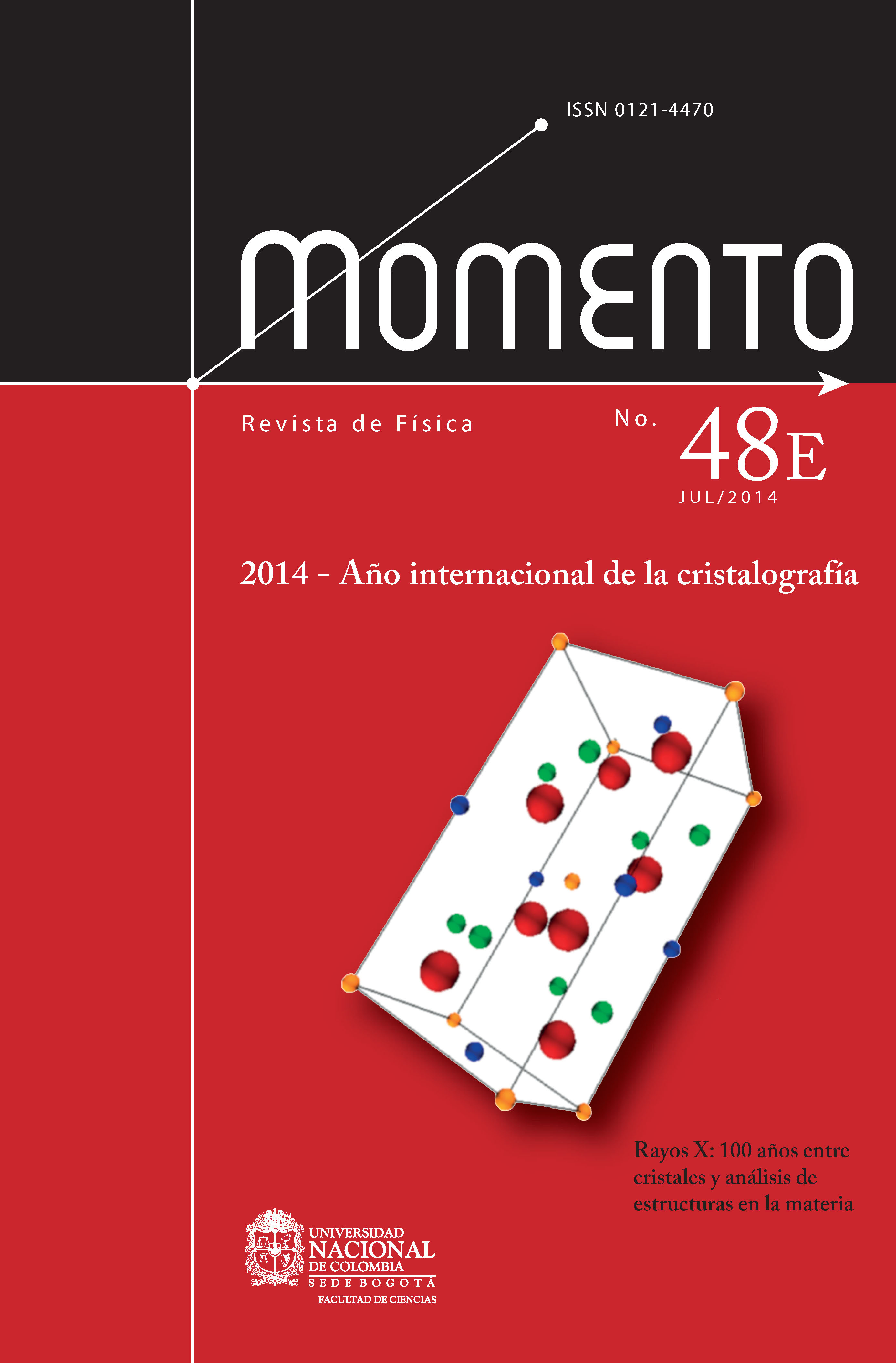CARACTERIZACIÓN ESTRUCTURAL DE CENIZA VOLCÁNICA DEL NEVADO DEL RUÍZ: IDENTIFICACIÓN FASE ZEOLITA
STRUCTURAL CHARACTERIZATION OF VOLCANIC ASH OF THE NEVADO DEL RUIZ: ZEOLITE PHASE IDENTIFICATION
Keywords:
Ceniza volcánica, Zeolita, Heulandita-Ca, Stellerita, Gmelinita (es)Volcanic ash, Zeolite, Heulandita-Ca, Stellerita, Gmelinita (en)
Downloads
En este trabajo se presenta un estudio de las propiedades estructurales de ceniza volcánica obtenida del Nevado del Ruiz ubicado en la Cordillera Central de los Andes-Colombia. Las muestras de ceniza volcánica fueron sometidas a procesos de hidratación y tratamientos térmicos sucesivos e insitu durante las etapas de caracterización del material. Durante el proceso de hidratación, que consistió en introducir 2.4875±0.0002g de ceniza volcánica en 20ml de agua de durante 48 horas, la fracción orgánica presente fue retirada a partir de la suspensión particulada en el medio acuoso realizado. A partir de las medidas de difracción de rayos X (DRX), se pudo determinar que las variaciones de temperatura realizadas entre 323 y 673 K influyen en la formación de fases de zeolita con estructuras Heulandita-Ca, Stellerita y Gmelinita. Las medidas de XRD se realizaron en condiciones de vacío y presión atmosférica. Haciendo uso del programa X´pert Highscore Plus se realizó refinamiento Rietveld y la simulación de las estructuras de cada una de las fases encontradas. Se encontró, usando la ecuación de Scherrer, que los tamaños de cristalitos (D(2q)) son influenciados por los cambios cristaloquímicos producidos por la hidratación y los tratamientos térmicos, así como de las condiciones de presión sometidas durante la caracterización. Se encontró una variación de D(2q) entre 37 y 106.9 nm obtenido a partir de medidas de XRD. Se determinó que a partir de 423K en la muestra de ceniza volcánica sin hidratar, se presenta la formación de zeolita tipo Stellerita con fase estable hasta 673 K.
This paper presents a study of the structural properties obtained from volcanic ash from Nevado del Ruiz located in the Central Range of Andes - Colombia. The volcanic ash samples were subjected to hydration processes and heat treatments in situ during characterization stage material. During the hydration process, which consisted of introducing 2.4875 ± 0.0002g of volcanic ash in 20ml of water for 48 hours, the organic fraction present was removed from the particulate suspension in the aqueous medium. From measurements of X-ray diffraction (XRD), it was observed, that the temperature variations between 323 and 673 K influence the phase formation of zeolite with structures Heulandite -Ca, Stellerita and gmelinite. XRD measurements were performed in vacuum and atmospheric pressure. X'pert Highscore Plus program and simulation Rietveld refinement were used for to obtain the structures of each of the phases. It was found, using the Scherrer equation, that crystallite sizes (Δ (2θ)) are influenced by changes crystal-chemical caused by hydration, heat treatment and pressure conditions during the characterization. A variation of Δ ( 2θ ) between 37 and 106.9 nm from XRD measurements was found. It was determined that from 423K in the sample of un-hydrated volcanic ash, the formation of zeolite Stellerita presents with a stable phase up to 673 K.
How to Cite
APA
ACM
ACS
ABNT
Chicago
Harvard
IEEE
MLA
Turabian
Vancouver
Download Citation
Article abstract page views
Downloads
License
Those authors who have publications with this journal, accept the following terms:
a. The authors will retain their copyright and will guarantee the publication of the first publication of their work, which will be subject to the Attribution-SinDerivar 4.0 International Creative Commons Attribution License that permits redistribution, commercial or non-commercial, As long as the Work circulates intact and unchanged, where it indicates its author and its first publication in this magazine.
b. Authors are encouraged to disseminate their work through the Internet (eg in institutional telematic files or on their website) before and during the sending process, which can produce interesting exchanges and increase appointments of the published work.



















